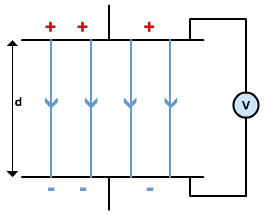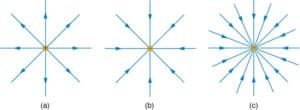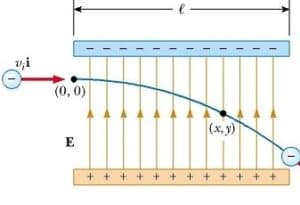Notes on electric field for Cambridge A level and UTME

Notes on electric field for Cambridge A level and UTME
Electric field is a region of space where an electric charge body/object experience a electric force.
Field of force
gravitational field – point mass
electric field – charge
magnetic field – current carrying conductor / charge
Field of force are always vector quantities because their field lines always show the direction. Electric field lines will always go in the direction from the positive to the negative region.

Positive point charge : the field lines are radially outward and are always in the direction of the force
Negative point charge: the field lines are radially inward

Point charge are spherical in shape and infinitesimal in nature
Electric field strenght: at a point in an electric field field is defined as the force per unit charge acting on a positive stationary charge at that point
E = f / q
cross multiply
F = qE
A ‘test charge’ should be positive. the direction it moves in then shows the direction of the electric field.
Uniform electric field
1.The field lines must be parallel
2.The field lines must be equally spaced
The electric field lines is from region of higher potential to a lower potential
The force acting on a charge inside a uniform electric field is constant at all point
The path of a charge inside a uniform electric field is always parabolic in path
Example of a uniform electric field is when you have two parallel plate of

E = v / d
E is the electric field strenght
v is the electric potential difference
d is the distance between the plates
Note that E can also be f / q
E = v / d = f / q
cross multiply
f.d = v . q
f . d = workdone
workdone = qv
Moving charge inside a uniform electric field

But a positive charge will deflect toward the negative charge in a parabolic path
Ek = qv
Ek = 1/2mv2
equate the two
1/2 m v2 = qv

Vel is the speed of the charge
v is the potential difference
m is the mass of the charge
q is the charge
Recommended: Solved questions on electric field
